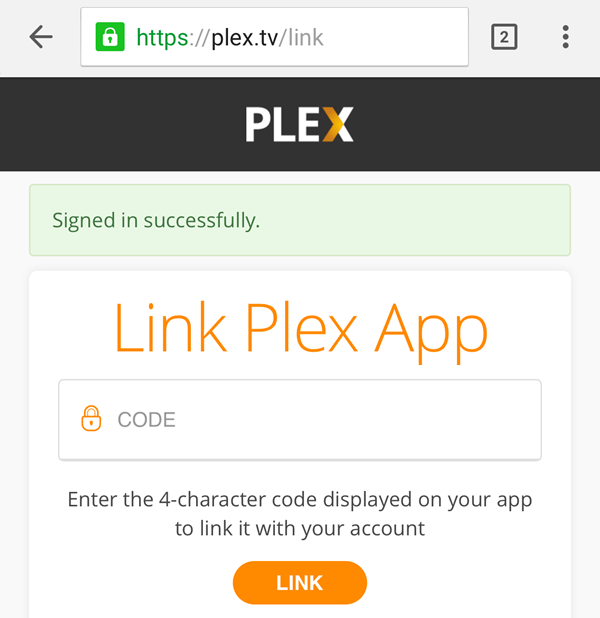
Now you have everything you need to start using the API. Your token should look something like this ( a big mess of numbers and letters – mine is 20 characters long): Your URL should look something like this ( starts with the https part, ends with 32400): Your Plex URL and token are taken from the XML page URL You can do this on your PC/laptop – you don’t have to do it on the Pi: First, log in to your Plex server using a desktop browser. You can get both the token and URL in one hit. Naturally you can’t start poking around inside someone’s server without authorisation, so we need to grab a token and server URL to prove it’s yours. That’s the library installed, nothing more to it.
VISIT HTTP PLEX TV LINK CODE INSTALL
Then use this command to install the library (I use sudo here as it wouldn’t work quite right without it): Make sure you’re in your home directory first:

I used the following commands to add the Plex API Python library to my Pi.

It’s a bit of fun really, none of this information is vital to me, but it’s just another interesting thing to have on my desk.

I thought it’d be fund to use some old Raspberry Pi kit to create a little Plex server monitor using the unofficial PlexAPI and a 20×4 LCD module. I ripped my DVD collection on to a hard drive a long time ago, and I now stream that collection to my devices using a Plex server. No sir.Īs you can imagine, I’m not one to be pushing plastic into holes to watch a film. They have no place in today’s world of self-driving cars, WiFi thermostats and smart washing machines. DVDs – why do they still exist? Archaic space-consuming biscuits of polycarbonate.


 0 kommentar(er)
0 kommentar(er)
